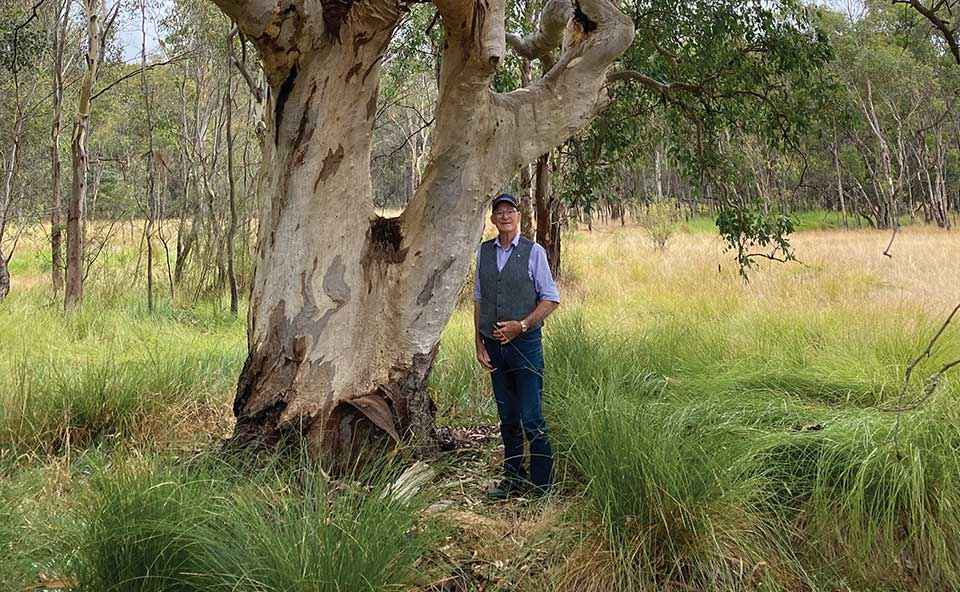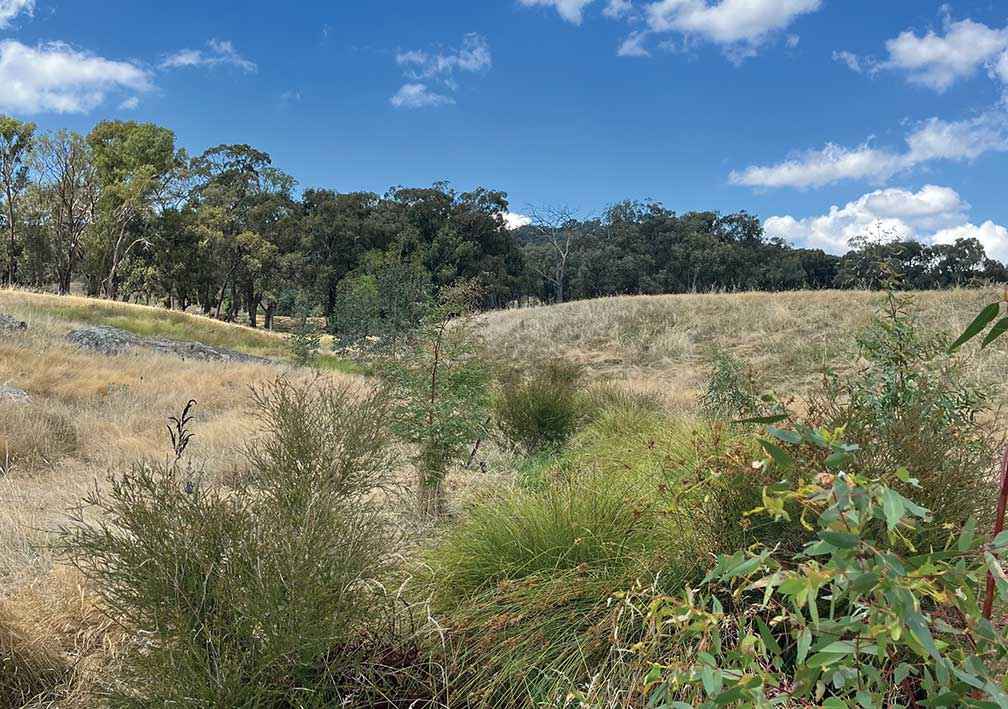Victorian Landcare Magazine - Spring 2024, Issue 88

I have been involved in restoring a rundown property at Wooragee in northeast Victoria since 2011. I bought the property having recently retired as a specialist obstetrician and gynaecologist in Wodonga and wanted to get involved in regenerating the bush.
I have been involved in restoring a rundown property at Wooragee in northeast Victoria since 2011. I bought the property having recently retired as a specialist obstetrician and gynaecologist in Wodonga and wanted to get involved in regenerating the bush.
I grew up on a small farm at Wantirna and had helped to repair a friend’s property in Eskdale, so I was ready for a challenge.
I have been a long-term member of Wooragee Landcare Group and have been so impressed with the extent of knowledge and experience the group has to offer. They have several projects each year involving revegetation projects.
My long-term aim for the property at Wooragee is to establish a 900-metre tree corridor for the resident koalas to travel between two forested areas on either side of the property.
Back in 2011 the land was choked with weeds, including vast areas of blackberry, Paterson’s curse, St John’s wort, thistles, and capeweed. More than 150 years of water erosion had created large gullies with huge holes up to three metres deep.
My long-term aim for the property at Wooragee is to establish a 900-metre tree corridor for the resident koalas to travel between two forested areas on either side of the property.
My first task was tackling the 900-metre gully that had high velocity water flow after heavy rain. The gully had a catchment area of about 50 hectares and severe erosion down to bedrock. It was steep sided with a wide base and covered with dense thickets of blackberry. There was no way I could divert the water flow away from the gully.
Treating and destroying the 3-metre-high blackberry thickets with a combination of different herbicides exposed the extent of the erosion damage. Large holes were filled with loose rocks, 50 to 500 millimetres in diameter, and compacted with topsoil from another area of the farm. The gully was then planted with quick growing native grasses including (Lomandra longifolia) that has dense root systems that penetrate the soil.

Above: Established grasses and shrubs looking south along a restored gully at Wooragee.
I then grew several hundred local black wattle (Acacia mearnsii) from seed and planted these at the edges of the water flow, along with manuka (Leptospermum scoparium). These plants are known to hold the topsoil together in areas of water flow. I also planted over 200 stringy bark and yellow box (Eucalyptus macrorhyncha and Eucalyptus melliodora) on the edges of the gully.
One section of the gully had a 50-metre steep downhill area, which required a rock chute. This was constructed from 350 to 500-millimetre granite rock, placed over a large sheet of geomesh fabric. The rocks were compacted individually and gradually the sediment filled the spaces, allowing native grasses to grow. This took only one year for the native and sown grasses to take hold.
Since the gully has been stabilised we have had the wettest winter for many years, but no erosion has developed.
Since the gully has been stabilised we have had the wettest winter for many years, but no erosion has developed.
My advice to others who have severe erosion problems on their farms is that individual management is required. If possible, it is advisable to divert the water flow away from the affected area to allow it to stabilise. An earth berm can be made easily to divert water flow.
Aim to avoid fast flowing water in gullies by placing bales of hay, branches or large rocks in the stream. This turns a narrow channel into a wide flat area for sheet flow of the water.

Above: Looking north along the restored gully.
All dirt roads and tracks on sloping land need attention after a rain event. Cutting runoff culverts will stop water running down the road. Avoid driving along the same part of the road as the wheel ruts will allow water to flow. Dirt roads should have adequate culverts – often twice the diameter you would consider sufficient.
After the last few years of excessive rain events around most of Australia, it is timely to consider erosion prevention and control.
Dr Pieter Mourik AM is a member of the Wooragee Landcare Group.
For more information go to www.woorageelandcare.org.au